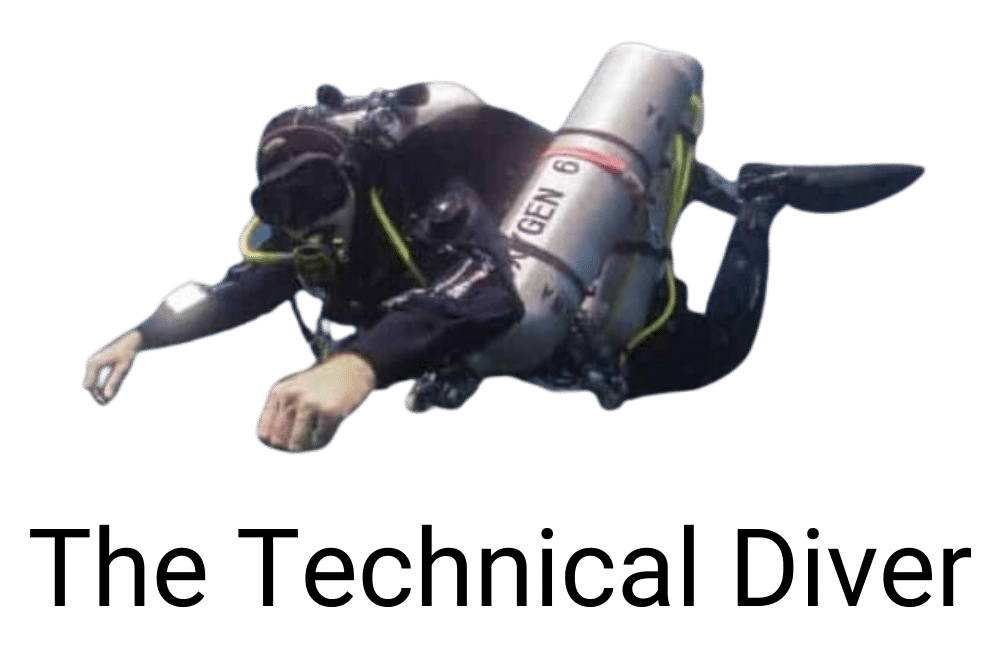Advanced nitrox
Advanced Nitrox
After completing your Intro to Tech or Sidemount course, the next step is refining your dive planning skills. Advanced nitrox training exists precisely for that purpose. It builds on basic decompression principles and prepares you for more technical courses. In advanced nitrox, you work with oxygen-rich gas mixes, manage decompression cylinders, and practise safe gas switching.
Dive Agency Certifications
Most agencies offer their own version of advanced nitrox, with the exception of PADI, where Tec 45 is the closest option.
TDI Advanced Nitrox does not authorise decompression dives, but it permits nitrox mixes above 40%. Certified dives extend to 40 m (130 ft). The course develops the skills required for the next step: decompression procedures.
RAID Decompression Diver and Deco 40 form a different pathway. Decompression Diver was introduced as a soft entry into staged decompression. It requires students to plan and execute at least one decompression dive. Training focuses on using a single back gas with a limited decompression obligation, supported by safe bailout strategies.
RAID Deco 40 builds further, authorising dives to 40 m (130 ft) with up to 10 minutes of mandatory decompression. It allows one decompression gas, usually oxygen or a high-percentage nitrox. Instructors may also introduce small trimix blends to reduce narcosis and gas density. Students must use a multi-gas dive computer when planning more than one gas. The chosen bailout gas must remain breathable at the maximum operating depth.
Both Decompression Diver and Deco 40 are designed to bridge recreational and technical training. They reinforce the gas management and equipment handling skills already introduced in advanced nitrox.
Course Length & Structure
Advanced nitrox and Deco 40 typically require at least 6 dives across 4 days. Training includes classroom theory, land drills, and open-water dives. RAID’s Deco 40 often adds a pool session.
I hold teaching qualifications with TDI, SSI XR, PADI TecRec, IANTD, and RAID. Regardless of the agency, I apply the same training standards. Decompression physiology is universal, even if agencies differ in rules for depth or skill timings. For example, TDI does not allow limited accelerated decompression at this stage, whereas RAID does.
The academic work covers planning with nitrox mixtures up to 100% O₂. It expands on decompression theory, physiology, and software-based dive planning.
Required Skills
During advanced nitrox training, divers revisit key skills from Intro to Tech and add new competencies, including:
-
Gas switching
-
Managing a free-flowing deco regulator
-
Responding to loss of decompression gas
-
Staging and retrieving a cylinder
-
Towing a diver with extra cylinders, underwater and on the surface
-
Ascents with planned gas switches
-
Rescuing a diver suffering oxygen toxicity
-
Handling wing or inflator failures
Divers plan their own dives using software, then execute them precisely underwater. This discipline forms the base for all later decompression training.
TDI Advanced Nitrox
To enroll in an advanced nitrox course, you must:
- Minimum age: 18 (or 15 with parental consent)
- Advanced Open Water certification (or equivalent)
- Nitrox certification
- At least 25 logged dives
RAID Decompression Diver
-
Minimum age: 16 (or 15 with parental consent)
-
RAID Explorer 30 or Advanced 35 (or equivalent)
-
RAID Nitrox and Deep 40 certifications (or equivalent)
-
At least 20 hours underwater or 30–40 logged dives
RAID Deco 40
-
Minimum age: 16
-
RAID Explorer 30 or Advanced 35 (or equivalent)
-
RAID Nitrox and Deep 40 certifications (or equivalent)
-
Logged experience: minimum of 30–40 dives, including deeper dives
Header image photo credit: James Emery Photo
